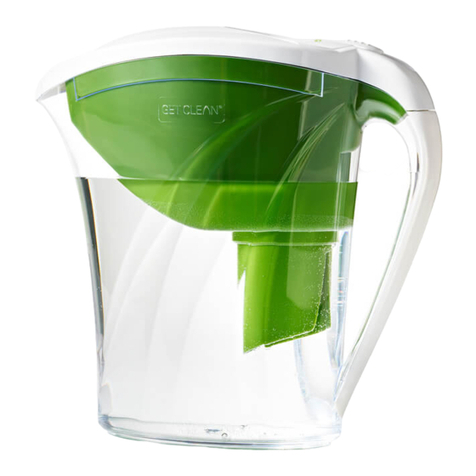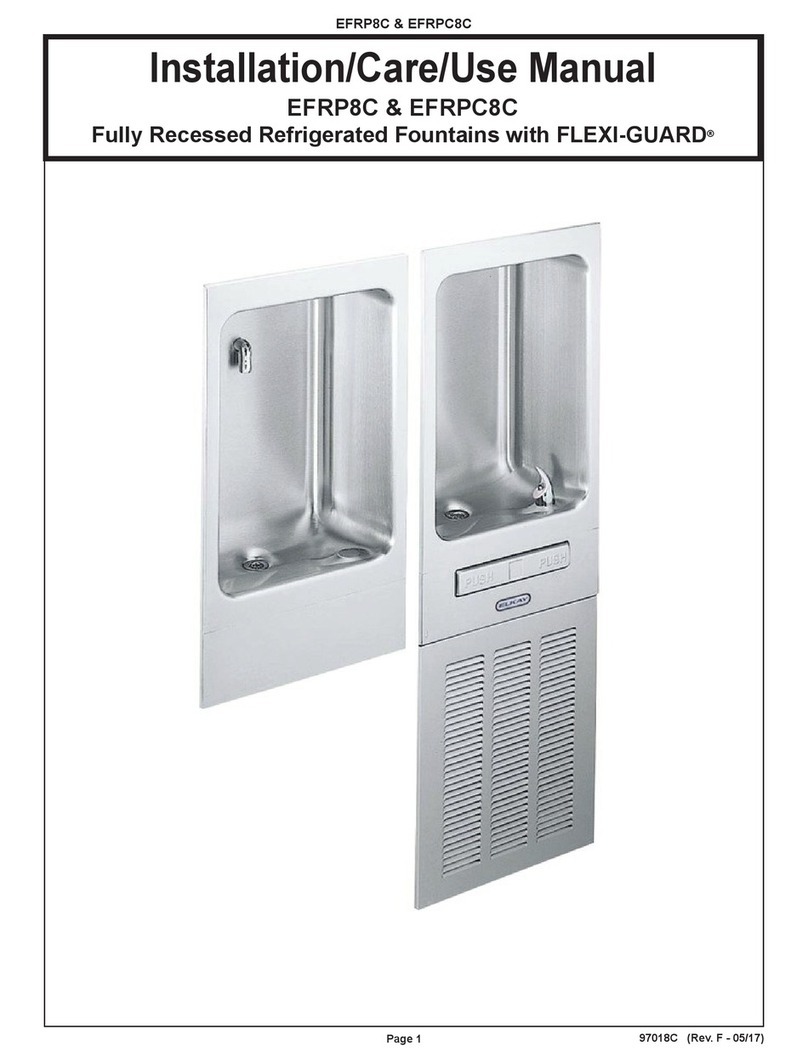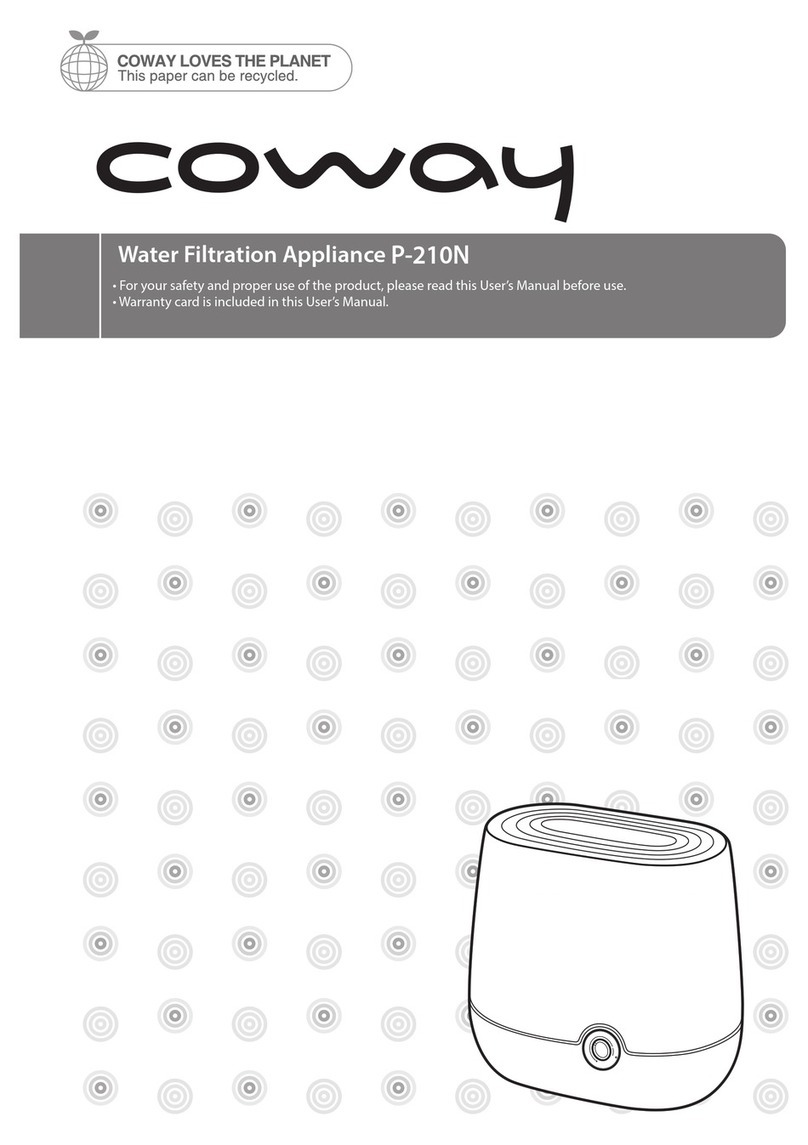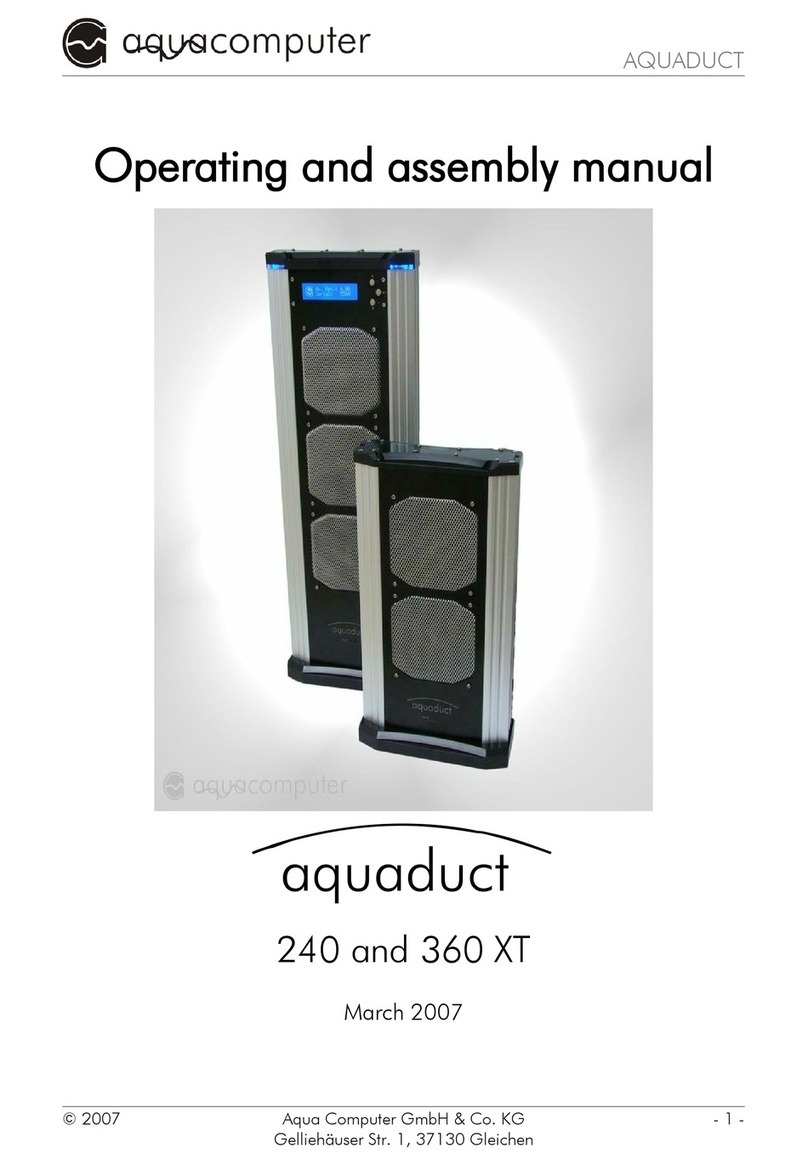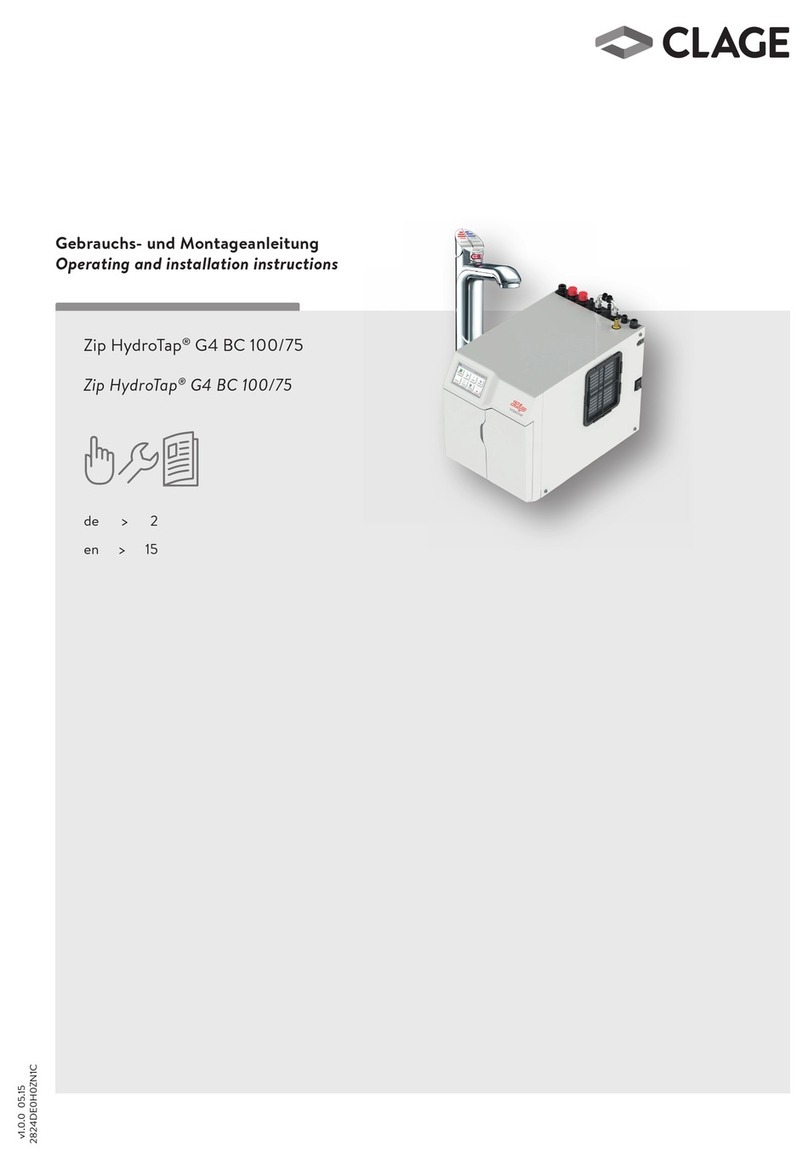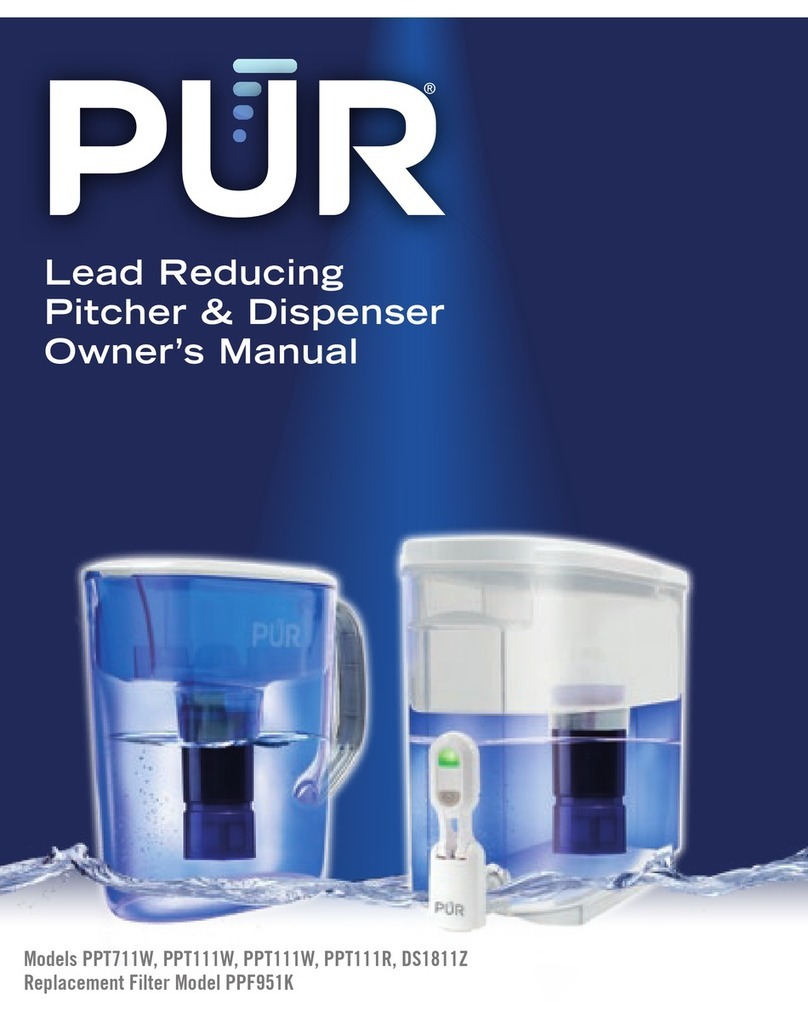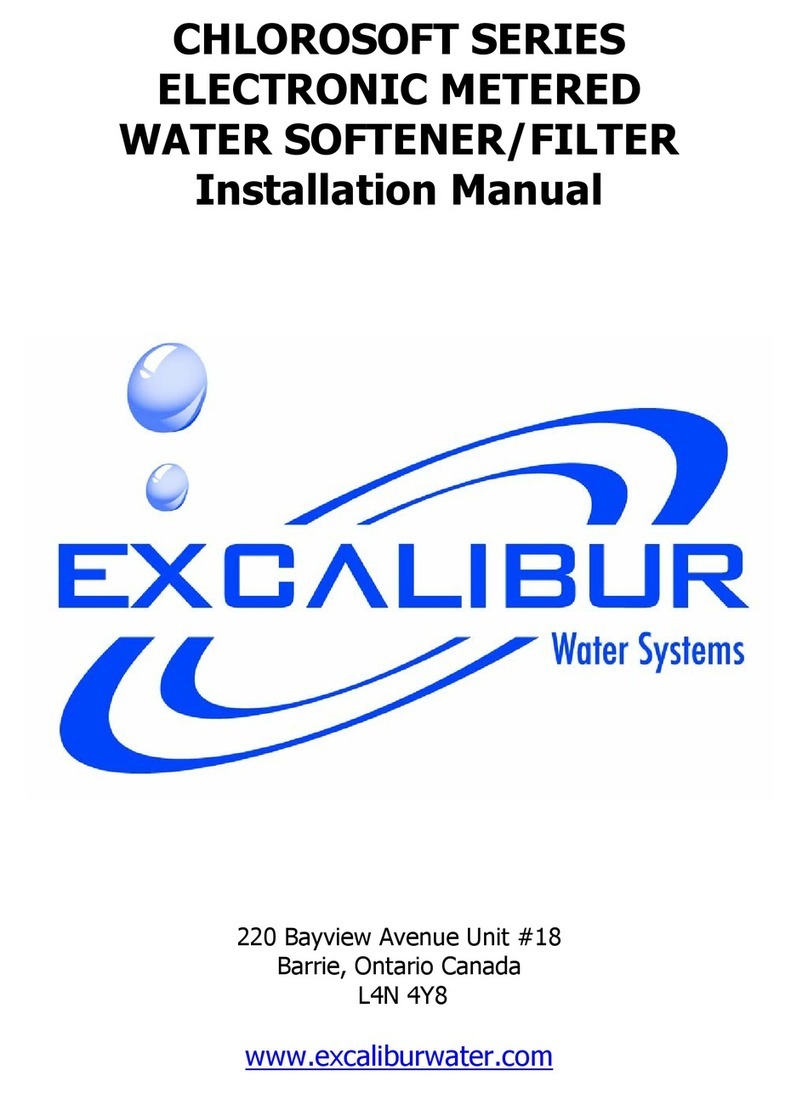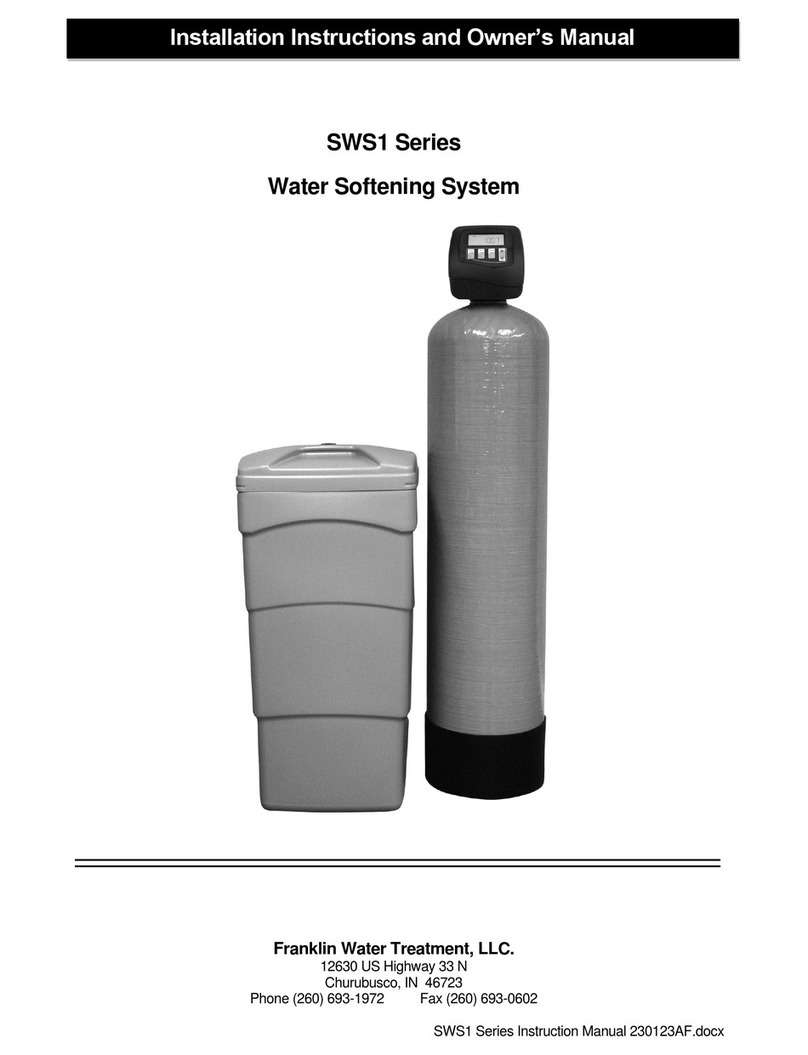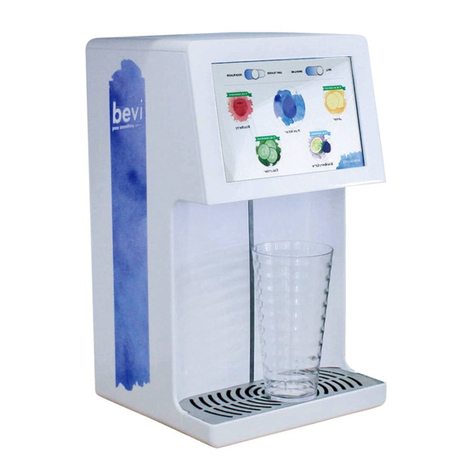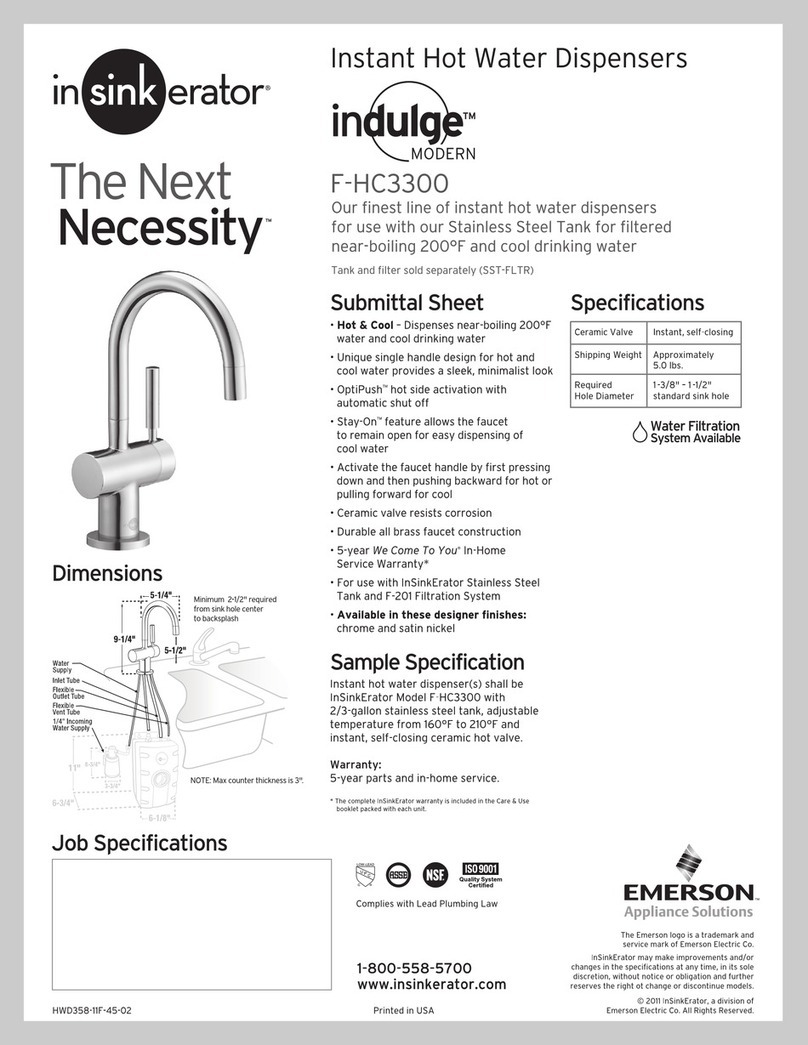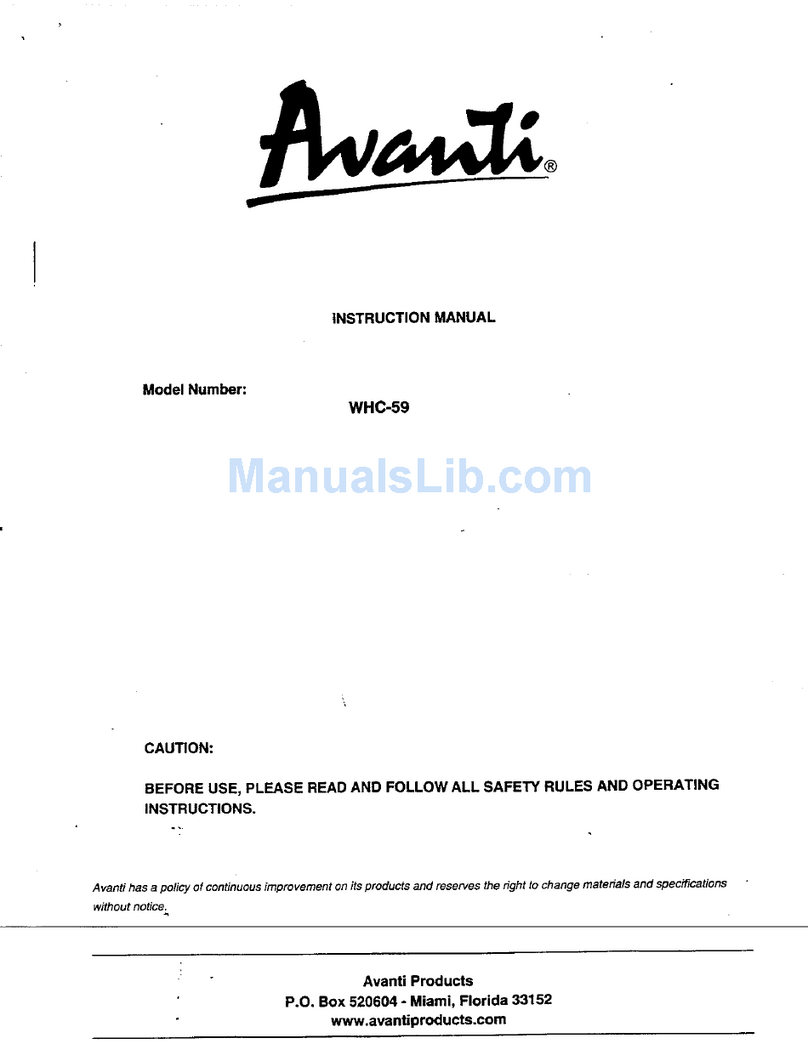
AUTOMATIC SOFTENERS INSTRUCTIONS MANUAL
AM/T AM/RT AM/V AM/RV AM/METER AM/R METER
s.r.l. - ITALY Page 8 of 15 am_tvm_mi-r1.doc - r.1
4.5. Hydraulic connections
(see installation and components drawings)
In order to avoid shut-off during maintenance operations, an emergency by-pass line
should be provided
•Connection of inlet fittings
For models AM/R, AM2700 and AM3300 only:complete the line from the untreated water line
to the outlet fitting of the regeneration valve.
For all other AM models:complete the line from the untreated water line to the outlet fitting of
the regeneration valve; connect also the inlet membrane valve V2 to the same water line.
•Connection of outlet fittings :
SERIES /T and /V, models AM/R, AM2700 and AM3300 only:complete the line of the treated
water line to the inlet fitting of the regeneration valve.
SERIES /T and /V, all other AM models:complete the line of the treated water line to the inlet
fitting of the regeneration valve; connect also the outlet membrane valve V1 to the same
water line.
SERIES METER: complete the line of the treated water line to the outlet membrane valve V1.
For models AM/R, AM2700 and AM3300 only the outlet membrane valve is installed
immediately downstream of the outlet fitting of the regeneration valve.
For all other AM models the outlet membrane valve is plumbed at the bottom side of the resins
columns and the outlet fitting of regeneration line is plugged.
•Insert horizontally the pulse sender water meter downstream of outlet connections, (only for
series AM/V, AM/RV, AM/METER and AM/R METER).
•Connect the drain fitting placed on the side of the automatic valve to a floor drain. The gate
valve mounted on the drain fitting will be used to adjust the backwash flow rate.
A common flexible pipe made in plastic or rubber can be used for the drain line downstream
of the gate valve; its size must be equal or larger of the one mentioned on
“CHARACTERISTICS FOR EACH MODEL” table.
It is suggested that the drain line could be inspected in order to check quantity and quality of
drain water, as well as any leakage of resins from the unit.
CAUTION : Do not run the drain line together with overflow line of the brine tank; it will cause
the filling of the brine tank.
•Connect the over-flow fitting of the brine tank to a floor drain, with a line separated from the
drain lines of the vessels. Use proper sized flexible plastic or PVC pipe.
•Complete the line from the brine drawing fitting (on the side of the automatic valve) to the
float valve of the brine tank. For models up to AM 2100, use for the connection the supplied
plastic tubing ø 9.5 (mm); for models AM 2700 and over use ¾" galvanized pipe, or proper
sized PVC or plastic tubing, suitable to withstand the pressure and depressure (0.5 bar
negative).
•run the plastic tubes, already connected to the electronic programmer, to the fittings placed
on the control valves and on the diaphragm valves, according to the numbered sketch.
CAUTION : to avoid any damage of the plastic fittings and parts, it is required to hold all the
piping using adequately sized brackets.
4.6. Electrical wiring connections
•Connect the power feeder of the programmer to a power socket; check that the available
power is correct as listed in technical characteristics (see § 3.2 page 5).
•Connect the DIN plug from the water meter on the socket placed on the side of the
electronic programmer (only for series AM/V, AM/RV, AM/METER and AM/R METER).




















